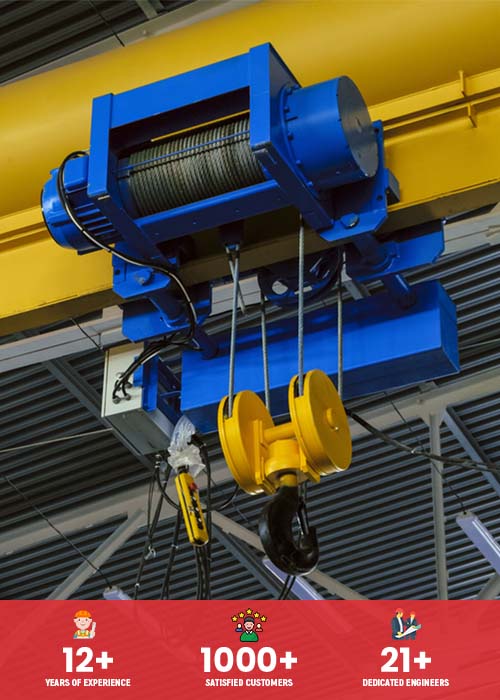Delivery and Installation of Cranes
The crane is being utilized more and more, and its benefits are widely recognized by all users. These benefits include the product’s safety as well as its easy-to-use interface, comfortable and safe operation, etc. Simultaneously, we are becoming increasingly concerned about the safety of crane installation, particularly with regard to the user and crane manufacturer in Ahmedabad. Cranes are considered unique equipment, and their installation requires qualified professionals with the necessary certifications; if not, the technical supervision departments will forbid it and take appropriate action. Some of the pointers that should be noted during the installation process are discussed in this article.
Importance of Safety Procedures While Installing Cranes
When installing a crane, there are many things to consider. For instance, making appropriate plans and arrangements can not only save a lot of time but also increase the effectiveness of the installation process. Therefore, in order to install a crane in a strict, methodical, and orderly manner, it must be accepted and installed in accordance with crane safety procedures, the Standard of Construction Safety Inspection (JGJ59–99) and crane operation instructions, as well as the actual circumstances of the construction unit itself.
We will now talk about the issue with crane installation as well as other pertinent topics related to the examination and approval of the crane.
Crane Installation Pointers
- First and foremost, consideration needs to be given to the ultra broad and ultra high issues when shipping the crane. If necessary, the transfinite procedures should be completed in advance to prevent delivery time delays caused by the inability to complete the requirements.
- Second, before the crane is mounted, installation procedures need to be managed by the installation location’s technical supervision department. This is an essential procedure that must be completed before the crane is shipped in order to minimize weekends. If not, it will interfere with the crane’s installation in accordance with the plan.
- Next, create a detailed strategy for product delivery to the customer and manage the inspection process. These are also critical steps that must be taken in order for the crane installation to go smoothly.
- Another thing to keep in mind is that, should it be delivered to the building site, a truck crane might be required to assist with the unloading and installation of the crane. This will also require sufficient planning. Thus, create a well-thought-out plan that minimizes any delays to regular use and ensures that the car is not left idle in order to maximize efficiency, cut down on wasteful spending, and shorten wait times.
Post Installation
The crane cannot be used after installation until it has undergone on-site debugging and qualified testing. Before the construction unit departments, the security department, etc., approve the crane installation, it will be thoroughly inspected, item by item. To guarantee the safe operation of the crane, conduct load tests, no-load tests, and technical inspections concurrently. Furthermore, it is still crucial and vital to do routine maintenance and safety inspections. In order to guarantee that the crane operates well, faultlessly, and safely after installation, it is also necessary to undertake routine and sporadic maintenance as well as security specific inspections, paying particular attention to the weight limiter, wire rope, pulley, rope, and other important parts.
Conclusion
Crane installation is one of the most important processes in the lifecycle of a crane. The most significant and fundamental issues with crane installation are listed above and by planning ahead, you can reduce unnecessary costs while simultaneously increasing work efficiency at the floor. However, another essential procedure pertaining to the safety and operation of cranes is the acceptance inspection.





